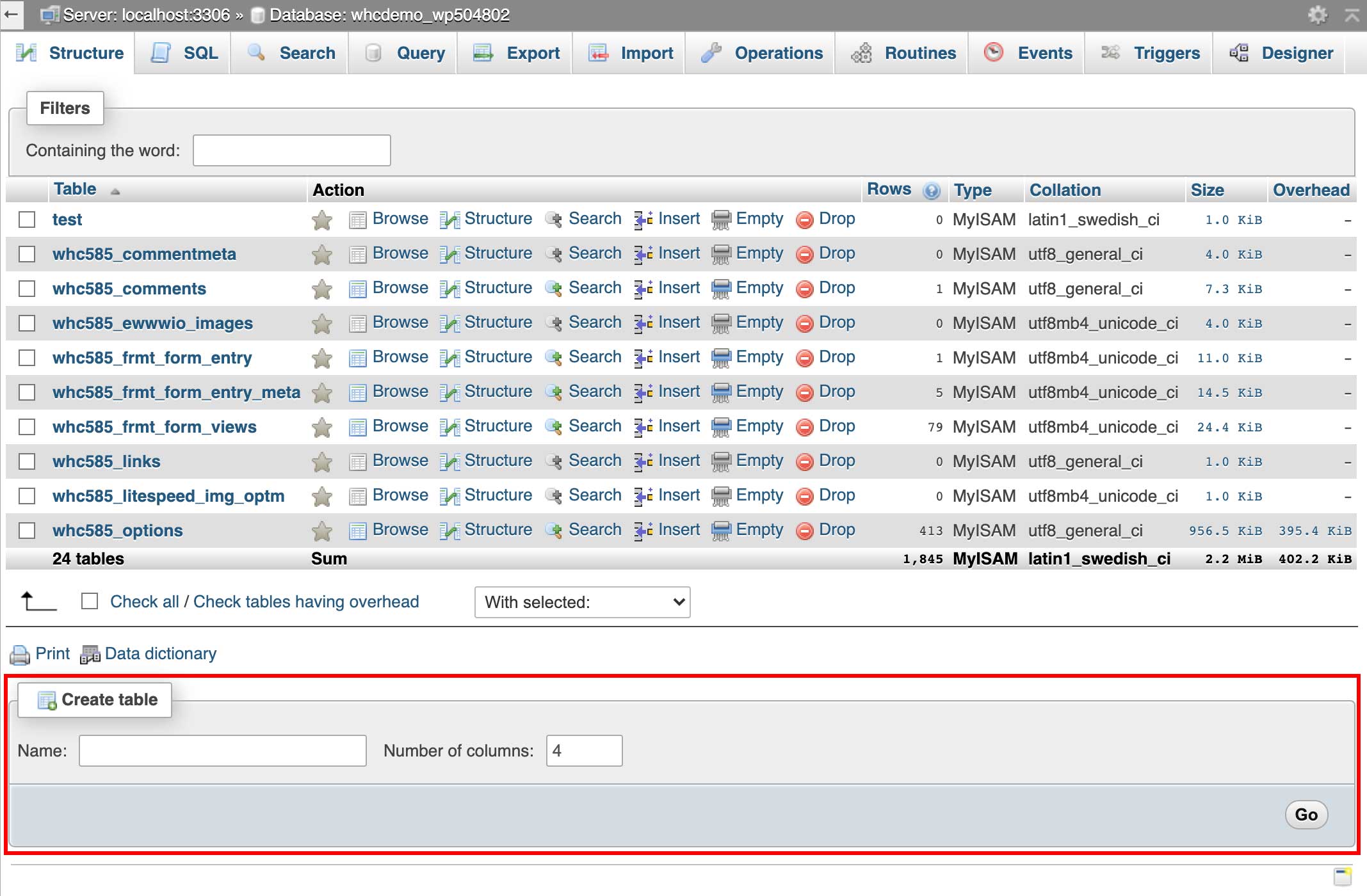

If you select an existing user, this field is disabled.
#PHPMYADMIN CREATE NEW DATABASE PASSWORD#
If you are creating a new user, re-enter the same password as above here.

If you are creating a new user, enter a password for that user here. For security reasons, having a MySQL user for each database is recommended so that any compromised site or credentials cannot be used to access your other databases. Here you can create a new MySQL user or select an existing one from a drop-down menu if any exist. Creating a hostname for each domain is generally recommended to prevent downtime should you remove a domain from your account in the future, and find out that other sites used a hostname on it and no longer functions. Here you can create a new hostname or select an existing one from a drop-down menu if any exist. If you found this tutorial helpful then don't forget to share.Once you have created the database, you cannot rename it.

You will see a success message after successfully importing.įollow any of the above methods to create a duplicate of the selected MySQL database either on the server or local system.Choose the exported SQL file and click on the Go button.If you enable the statistics for the databases, you will see a table with the used collations, the number of the tables and rows, the size of the data and indexes, the total size and the overhead. Open phpMyAdmin and select the newly created database. Databases The Databases tab lists all the databases which can be managed through the cPanel user.Here, check the All Privileges checkbox and click on Make Changes button. By importing a CREATE statement SQL script via the Import tab. By executing a CREATE statement via the SQL tab. You will be taken to the Manage User Privilege section. There are 4 ways to create a new MySQL database using the PHPMyAdmin client interface.
#PHPMYADMIN CREATE NEW DATABASE HOW TO#
In this tutorial of the phpMyAdmin course, we learn how to create a MySQL database with phpMyAdmin.


 0 kommentar(er)
0 kommentar(er)
